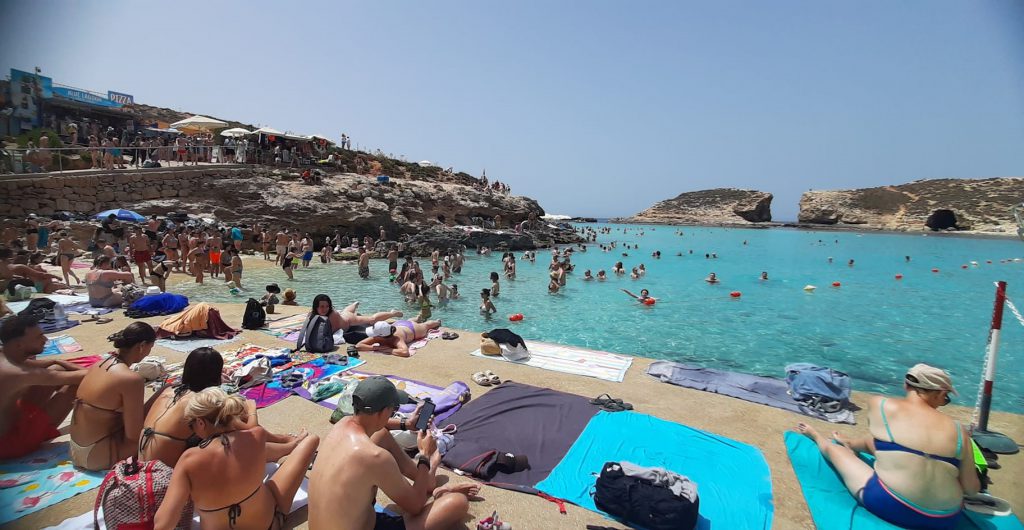The Dilemma of Comino’s Blue Lagoon: Paradise Lost

Comino’s Blue Lagoon, once a serene escape nestled in the heart of the Maltese islands, is now but a wistful memory for those who cherished its tranquil beauty. The crystalline waters that once promised peaceful solace now resemble a bustling Ibiza beach club, overrun with throngs of tourists. What was once a hidden gem is now suffering from the adverse effects of its own allure.
Upon visiting Comino, it is immediately apparent that the overcrowding issue has reached critical levels. From the crack of dawn, swarms of visitors flood the Blue Lagoon, transforming it into a chaotic mass of humanity. There is an alarming absence of regulation controlling the number of visitors or the influx of large vessels, turning what should be an idyllic retreat into a frantic scramble for space.
On the shoreline, the situation is dire. Every square inch is occupied, leaving no room for those who do not wish to pay for the privilege of renting an umbrella and sunbeds. These sunbeds are packed tightly together, depriving visitors of the personal space necessary for a relaxing experience. As a result, the overflow of tourists is encroaching upon the fragile garigue, a protected natural area that is now bearing the brunt of human encroachment.
The commercialization of Comino has exacerbated the problem. The island has become a hotspot for food and drink kiosks, which raises significant concerns about waste management. Despite repeated assurances from authorities to curb the exploitative practices of businesses seeking to capitalize on Comino’s popularity, the situation continues to deteriorate. The unchecked commercial activity is leading to unsustainable levels of waste and environmental degradation.
Even those who can afford the luxury of a private yacht find the experience diminished. The once ample space in the lagoon has become a rarity, with yachts jostling for position amidst the crowds. This underscores the urgent need for intervention.
It is evident that the status quo cannot continue if we are to preserve Comino’s Blue Lagoon. Taxation alone will not solve this multifaceted issue. What is required is a comprehensive, holistic approach to determine the carrying capacity of the island and, if necessary, impose a cap on the number of visitors. This strategy should not only focus on limiting numbers but also on ensuring sustainable practices are adhered to by both visitors and businesses.
To safeguard this natural treasure for future generations, decisive action must be taken now. Comino’s Blue Lagoon is a jewel of the Maltese islands, and its preservation should be a priority. A balance must be struck between allowing people to enjoy its beauty and protecting its fragile ecosystem from irreversible harm. Without swift and effective measures, the dream of a tranquil Blue Lagoon will remain just that – a dream.
